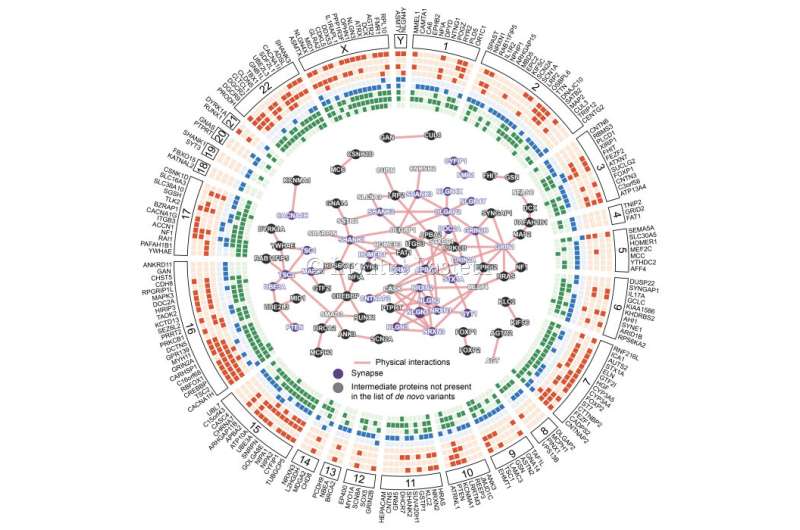June 30, 2023 report
This article has been reviewed according to Science X's editorial process and policies. Editors have highlighted the following attributes while ensuring the content's credibility:
fact-checked
peer-reviewed publication
trusted source
proofread
Autism-related genes in non-autistic individuals show a long-term socioeconomic influence

Autism research led by the Institut Pasteur, France, has found socioeconomic and cognitive correlations between rare loss-of-function variants in autism-associated genes and people without autism.
In a paper titled, "Phenotypic effects of genetic variants associated with autism," published in Nature Medicine, the researchers detail unexplored effects of autism-related genes on individuals without a diagnosis, suggesting a broader impact of related variants. A News & Views article in the same journal issue titled "How to talk about autism: reconciling genomics and neurodiversity" describes the work done by the team.
Analyzing whole-exome sequencing data of more than 13,000 individuals with autism and 210,000 undiagnosed individuals, researchers estimated the autism odds ratio of rare loss-of-function (LoF) variants in 185 genes associated with autism.
Besides rare variants with large effects, common variants associated with autism have been identified through genome-wide association studies and can be aggregated to calculate a polygenic score for autism for each individual.
As the team expected, genes with the highest autism odds ratios (DYRK1A, GRIN2B, SCN2A and SYNGAP1) were those previously identified as affected by de novo variants in independent genetic studies of autism.

The reasons why some individuals with LoF variants will have a diagnosis of autism while others do not is unclear, though the authors speculate that it probably depends on additional genetic, societal and environmental factors.
These variants were linked to a slight decrease in reasoning ability, career advancement, and income, as well as an increase in measures related to poverty.
Comparative brain imaging data from 21,040 individuals in the UK Biobank showed no significant differences in overall brain anatomy between carriers and non-carriers of these variants.
The findings show that LoF variants in autism-associated genes do not always result in a clinical diagnosis of autism but could negatively influence the abilities of clinically undiagnosable variant carriers to function in more general ways, as indicated by correlations with cognitive and socioeconomic metrics.
The effects of these genetic variations are not likely directly impacting cognition but involve a lengthy process influenced by environmental and stochastic factors, ultimately leading to socioeconomic and cognitive phenotypes.
Social environments and educational settings, in combination with learning styles early in life, can make lasting impacts. This research hints that there may be underlying genetic aspects to cognition that determine what best suits an individual's neurological development.
The authors suggest that more research is needed to understand the association between these variants and sociodemographic factors to better support people's ability to thrive in society.
More information: Thomas Rolland et al, Phenotypic effects of genetic variants associated with autism, Nature Medicine (2023). DOI: 10.1038/s41591-023-02408-2
Luca Chiapperino et al, How to talk about autism: reconciling genomics and neurodiversity, Nature Medicine (2023). DOI: 10.1038/s41591-023-02403-7
© 2023 Science X Network





















